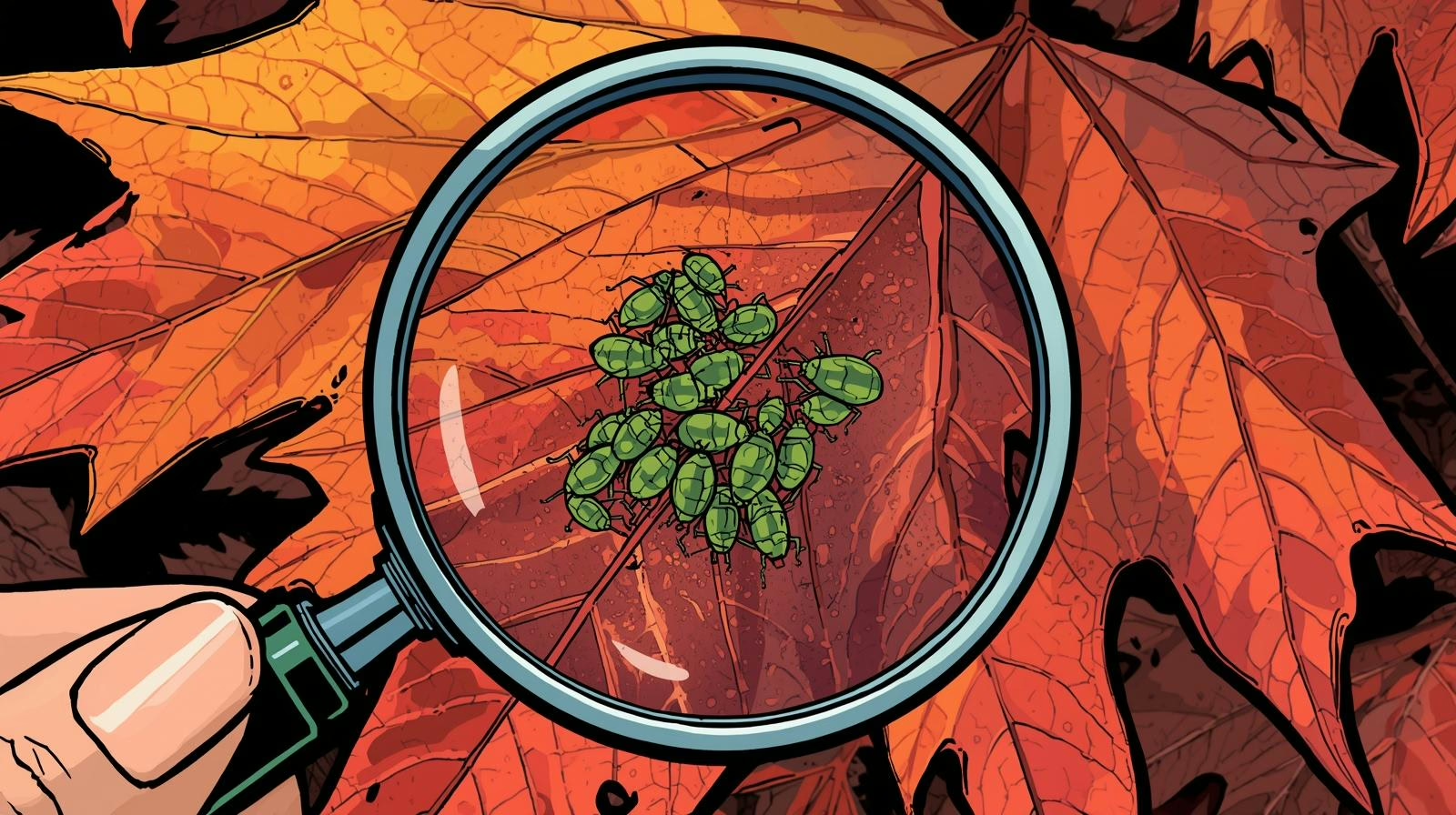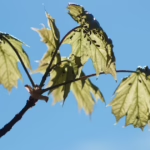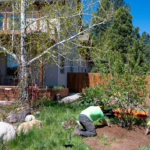Strategic Maple Maintenance Against Aphids: Timing and Tactics
Maple trees are a lot. They’re living systems responding to stress, insects, and environmental shifts. Among the most notorious of these insects are aphids. Tiny, almost imperceptible, yet capable of undermining a tree’s growth, aphids are often misdiagnosed as drought or disease stress. Understanding them can save a tree from struggling silently.
This guide explores the science and strategy behind maintenance against aphids, with a focus on maples and fall and early spring treatments using AzaSol, the OMRI-listed organic insecticide, and practical DIY measures for homeowners.

AzaSol contains 6% azadirachtin, a compound extracted from neem seeds, and operates in a way conventional insecticides rarely do. It doesn’t just kill aphids— it alters their biology.
Growth disruption: Aphids exposed to azadirachtin cannot mature properly, preventing population explosions.
Feeding deterrent: Treated leaves are less palatable, starving aphids without harming the plant.
Repellent effect: Aphids are less likely to colonize treated foliage, giving new growth a head start.
Because it is OMRI-listed, AzaSol allows for organic-conscious application, minimizing risk to beneficial insects, pollinators, and the surrounding ecosystem. Applications can be foliar sprays, soil drenches, or even tree injections.
Note: This means the aphids will not disappear immediately after the treatment is applied. Instead, it offers a safer, long-term solution whose effects will gradually become noticeable as the seasons change.
Simply put, AzaSol is a top-tier organic treatment that controls aphids without compromising future gardening or the health of beneficial plants and insects.
Timing: Fall and Early Spring
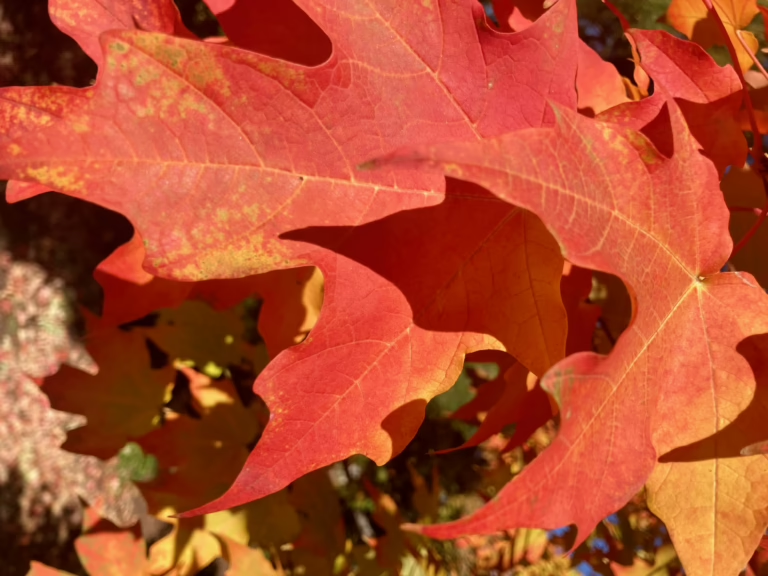
The aphid lifecycle is subtle and predictable. Successful intervention requires understanding the windows when they are most vulnerable.
Fall Application
Goal: Target overwintering eggs before they hatch in spring.
Window: After leaf drop but before the first hard frost.
Rationale: Disrupting eggs at this stage reduces the population before the next season begins. A single, well-timed application can significantly curb spring infestations.
Early Spring Application
Goal: Protect tender new leaves from emerging nymphs.
Window: Bud swell, before full leaf expansion.
Frequency: One or two applications spaced 7–10 days, depending on aphid activity.
Why it works: By treating before aphids establish colonies, we prevent exponential population growth, which can be devastating for young leaves.
Bottom line: preemptive treatment is always more effective than waiting for symptoms to show.
AzaSol is potent, but precision matters. ISA-Certified Arborists can bring expertise in:
Assessment: Measuring subtle stress and aphid density that homeowners might overlook.
Customized planning: Tailoring applications based on tree species, size, and microclimate.
Safe, effective execution: Correct mixing, thorough coverage, and proper method— ensuring maximum efficacy and minimal environmental impact.
DIY Measures
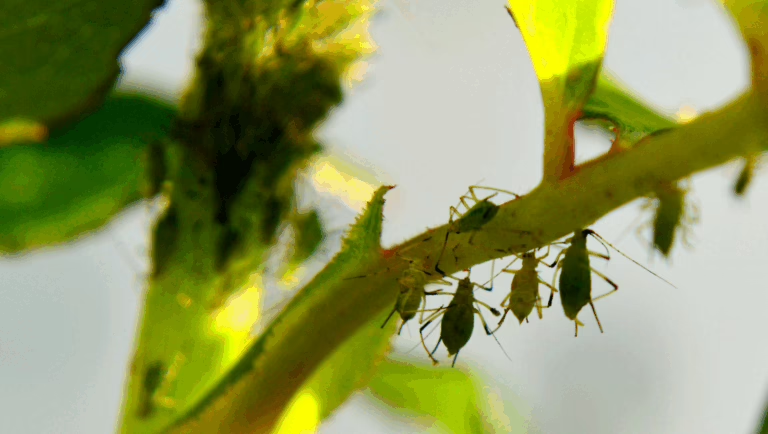
Without chemicals, there’re also a boatload of DIY solutions to help prevent aphid damage:
Soap and Water Sprays: A mild solution of insecticidal soap or diluted dish soap can physically remove aphids from leaves. Spray thoroughly, especially under leaves, every few days while populations are active.
Proper Watering: Consistent soil moisture helps reduce stress on maples, making them less attractive to aphids. Avoid overwatering, which can create conditions for other insects or diseases.
Soil Health: Mulch to conserve moisture, retain soil nutrients, and support beneficial microbial activity. Healthy soil produces healthier trees that can better resist infestations.
Regular Observation: Inspect leaves for curling, sticky honeydew, or clusters of small insects. Early detection allows for targeted interventions before populations explode.
Encourage Beneficial Insects: Ladybugs, lacewings, and parasitic wasps naturally control aphid populations. Plant pollinator-friendly flowers nearby to attract these allies.
For the Love of Sap!
Rather than respond once damage is visible, prevent aphid infestations with strategic interventions in fall and early spring. Combining proactive AzaSol treatments with attentive DIY care— monitoring, proper watering, soil maintenance, and encouraging beneficial insects— ensures your maples remain healthy, resilient, and full of sap!

